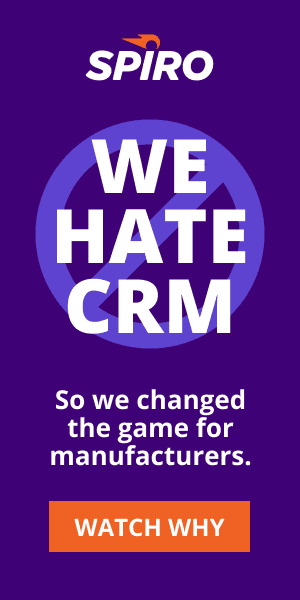Dark Cockpit CRM: Simplicity Means Sales
Does your CRM application only focus salespeople’s attention on activities or problems that need pursuing rather than overwhelming them with non-essential information?
That’s the thinking behind the dark-cockpit concept, which refers to airplane cockpits with switches and warning indicators that, by default, remain unlit. As explained on one aviation forum: “In layman’s terms, if something goes wrong with a system, a light comes on and you push the button/light to fix the problem (making the cockpit dark again).”
From a user-interface — and psychology — perspective, the beauty of that approach is that it’s both simple-looking and effective. For starters, the interface facing the user remains uncluttered. But, most importantly, whenever there is a problem, it’s easy to see and diagnose. Furthermore, a successful resolution gets verified by positive feedback: the warning light goes dark again.
Focus Users On The Essentials
Why can’t all business applications work that way too? In fact, that’s the call being sounded by technology research firm Nucleus Research in its recent report entitled “Enterprise Software Must Adopt The Principles Of Dark Cockpit.”
One leading productivity problem today, says Nucleus, is that as many business applications — including ERP and HR, but especially sales applications — have evolved, they’ve gotten harder to use, rather than simpler:
The vendor race for feature and function parity in enterprise software has increased the complexity of many applications to the breaking point. In assessing failed CRM deployments, for example, Nucleus found complex and confusing user interface design to be a key culprit.
Too many features and too much functionality bogs people down. Just look at the bloatware known as Microsoft Office. In CRM terms, the equivalent is the product proliferation challenge facing sales teams that must sell a seemingly endless variety of product bundles.
Make CRM Like Siri
For comparison purposes, just look at where today’s cutting-edge — and highly usable — technology is taking us. On iOS devices, Siri provides informed answers to spoken questions on a vast range of subjects, from your calendar and music collection to directions and weather. Meanwhile, the Google Now Android app can help hack your life, for example by learning how you usually drive to work and suggesting alternate routes — in advance — if it detects a traffic jam.
Without a doubt, the software underlying Siri, Google Now and their ilk may seem complex. But for users, it looks simple — and simplicity equals productivity because a properly designed, uncluttered user interface allows users to devote their energy to only what’s essential for getting their task or job done.
Less (Information) Means More (Productivity)
From a system-interface perspective, that’s why less means more. Some vendors, for example, promise that if you stuff every piece of information into their Big Data system, you’ll benefit from a “360-degree view” of your customers. But that approach is based on a fallacy, because you don’t need to know everything about your customers. Instead, you should only track and report on the information required to advance and close deals. Everything else is a distraction — especially for your salespeople.
The same goes for data entry. As Nucleus notes: “If sales is spending more than 8% of their time entering data in CRM, sales productivity is suboptimal.”
Given the “less is more” benefits on offer, Nucleus says it’s a no-brainer that rather than continuing to add tabs and dashboards, more CRM vendors will instead take a more intelligent, dark cockpit approach. “The next generation of CRM applications will put everything on one screen, limit the number of data entry points to fewer than nine and have the intelligence to both filter the important information to the user in context and capture their activity in the appropriate field of the CRM database,” Nucleus predicts. “Similarly, mobile applications will have even fewer buttons and will focus on the next action a CRM user can take to meet business objectives.”
Automation Is Key
To make that happen, however, automation will be essential. As noted on the aforementioned aviation forum, for example, modern airliners have continued to refine the dark cockpit concept to the point where many faults are now automatically identified and fixed in flight, with no warning light ever having to be flashed. Instead, at the end of the flight, pilots and mechanics can review a list of faults that were automatically fixed.
The same must happen with CRM. For starters, rather than showing salespeople every opportunity, the CRM application should instead focus them on the next action that’s most likely to lead to the biggest returns. Cue your best HAL voice: “I don’t think you need to be looking at that low-value contact, Adam, when your high-value client Joe Smith needs a call.”
The true value of CRM comes when the system can shrink the focus of your salespeople so they’re just doing the right thing at the right time. When it comes to increasing the productivity of your sales force, that’s the future.
Cover photo courtesy of Flickr user jbgeronimi.

